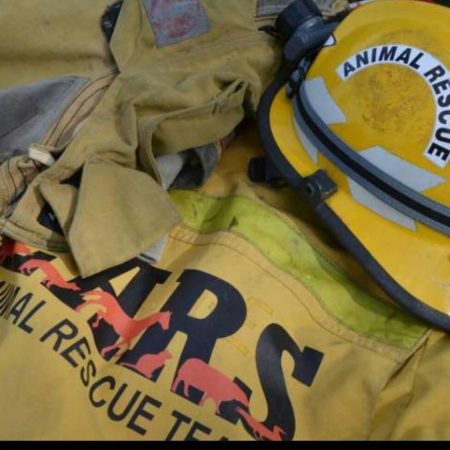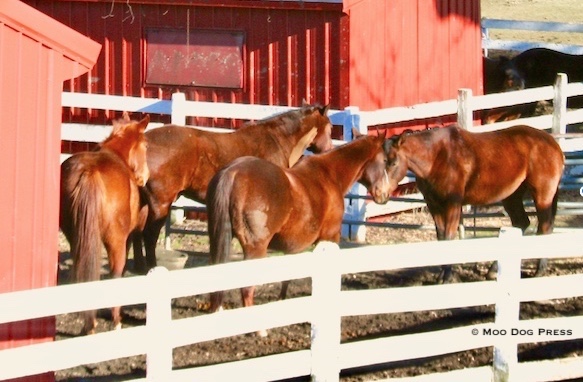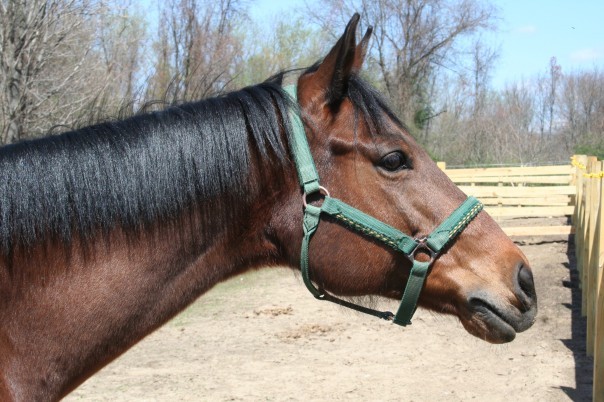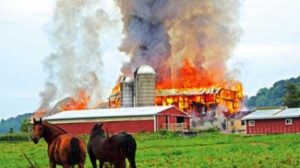Winter Barn Safety With Equines Event: Be Prepared
Be prepared. In the event of a fire or other emergency, knowing what to do can help save lives.
Prepare for the worst; practice safety drills in the event of an emergency, review what can be improved afterwards.
In winter – and at all times – be vigilant. Perform safety checks when around the barn or other places animals are housed – apply this to homes and businesses. In brutal cold temperatures this routine task becomes particularly important – life-saving important.
According to National Fire Protection Association (NFPA) more than 85% of barn fires are caused by issues which could have been prevented if proper safety checks and measures had been implemented.
A free event on Saturday, Jan. 20 is open to all and of interest especially to horse owners and lovers – all who ride, and emergency crews too.
Presented by the Connecticut Emergency Animal Response Service (CT EARS) and hosted by KB Equine at their facility located at 750 Allen Ave., Meriden, Connecticut, this program will include a multimedia presentation, question and answer session, handout materials, demonstrations, and a sample barn safety walkthrough. Participants will learn about what to look out for, how to develop and enforce safety protocols at their home barns, how to plan for and prevent emergencies, and also how to assure that their local emergency services have all the information they need when responding to a call for their location.
Registration is required (even though the presenation is free) to provide handouts for all attendees. To register, visit www.Facebook.com/EARSCT or www.EARSCT.org; those interested may email the organizers directly at info@earsct.org or call (203) 941-3277. Update: As of Jan. 10, this event is full; organizers are taking names for a wait list. Here's to other leaders in our communities stepping forward to host such a seminar/session. Think of collecting donations for a local non-profit or to support others who have lost horses.

The stated mission of CT EARS: To help owners, response services, and communities coordinate. plan, respond, and prepare, for emergencies and disasters affecting animals in Connecticut. This CT EARS image is linked directly with the organization's Facebook page for additional information.
With technology, sensors and remote (from your home or office) monitoring in real-time can be an added layer of well-being for your barn. For your consideration, there is a site called Fire Safety in Barns, for “everyone who has animals they want to protect from fire. Because this website was originally focused on the horse industry and fire safety, some of the information may seem pertinent to only equines, but that is definitely not the case.”
Here is an excerpt:
“There are two types of heat detectors: rate of rise and fixed temperature. The rate of rise detector alarm is activated when the air surrounding the detector rises several degrees in a very short period of time, usually ten degrees Fahrenheit within sixty seconds. Fixed temperature heat detectors are designed to activate at a preset temperature which can range from 135°F. to 190°F. The setting will be determined depending upon the location of the heat detector.”
Digital methods may also be employed – wireless barn camera systems if installed properly. Search for “cameras used in foaling, calving, lambing” or “barn security monitor systems” on any search engine. Ask advice about pros and cons from those who use such systems.
Some commonsense precautions and preventative measures to take:
Check your barn and animal areas for physical safety hazards such as blocked aisles and doors and sharp surfaces such as hooks and racks. Think in all dimensions of what could happen, then take action to prevent (as much as possible) these possibilities.
Inspect electrical systems, both permanent and temporary. Barns are not temperature controlled environments and even a professionally installed electrical system can be compromised over time by exposure to damp conditions and temperature fluctuations.
Double check equipment, particularly extension cords, temporary heaters, and heat lamps and replace if there is any sign of age, wear, frayed surfaces. If in doubt, replace. Feel the cords with a bare hand to see if there is any indication of excessive warmth. Check that they are stable and secure so that they cannot be upset by an animal, human – or even strong wind knocking something over nearby.
Keep in mind that just because an extension cord is working doesn't mean it is safe. The material in the cords will break down in a barn environment over time and exposure to the elements.
Consider upgrades, better alternatives to extension cords. Paying an electrician to install an appropriate outlet is money well spent – a proactive alternative to the potential of losing your animals and/or loved ones. If you find a problem, find an alternative. Remember, your animals are better off cold than dead.
Have a fire escape plan. Know your escape paths and make sure they are unobstructed. Understanding escape routes within your facility and where to take or push animals to safety and information on human occupants that may be around. Consider fire drills as preparedness helps all when/if an emergency takes place. Tragedies happen in an instant and all the wishing in the world won't change things after the fact. Even though it is cold, put on a jacket and walk out to the barn, hutch, pen, kennel, or coop and double check for safety issues.
If you have a farm or other large animal facility, consider inviting your local fire department out for a visit. Knowing vital information about your unique facility can make a world of difference for them should an emergency arise.
Among other things, emergency crews need information on access about your facility – location of electrical panels and generator shut-off switches, fuel storage both above and below ground, and the location of volatile materials such as hay, straw, and bedding. Provide information on any on-site water resources that could come into play – a pool, pond, or lake.
During these visits you can also share contact information and any special instructions such as no sirens within 500 feet of the barn. Remember, many people are not familiar with livestock and/or the behavior of equines – especially important during an emergency when fear is a factor. For example, if a horse is blind in one eye, those familiar with handling it will make allowances – but in a crisis, that crucial information can mean life or death.
It takes a small amount of time to perform routine safety checks. Do it soon. We all want to see those happy faces every morning.
Finally, some tips from the Connecticut Horse Council (CHC); complete PDF linked here.
• Have ABC-rated fire extinguishers available in your barn, truck, trailer, and in outbuildings. Periodically check the extinguisher to ensure it is fully charged. Practice twice a year using extinguishers with hands-on training.
• Annually review your insurance coverage to ensure it is adequate and current. • Store hay, straw, and shavings in a separate building. • Make sure your horses/animals cannot reach electric cords or light bulbs, and periodically clean dust from light bulbs. • Paint your main power panel a fluorescent color and label it clearly – “POWER” – so that responders can quickly locate shut offs. • Post emergency numbers in a visible and accessible place-especially near phones. Post your address as well, in case another person is making the emergency call. • Make sure your address and farm entrance are clearly visible from the road so that first responders can find you. • Never park farm vehicles in or near barns due to heat or sparks from engines. • Always check hay for moisture as bales can spontaneously combust. • Never have manure piles close to barns; manure piles can spontaneously combust. • In winter, always clear enough snow for emergency vehicles to access the barn.
This information is meant as a guideline only. It is strongly recommended that owners of livestock consult with your local fire marshal for additional information. The CHC provides these resources which may also be helpful in your quest to make your barn safe: National Association of State Fire Marshals www.firemarshals.org. Connecticut State Fire Marshal www.ct.gov/dps (860) 685-8380. Connecticut Veterinary Medical Association (CVMA) www.ctvet.org (860) 635-7770. National Fire Protection Association www.nfpa.org (617) 770-3000. Underwriter’s Laboratory www.ul.com (847) 272-8800. For equine information in the state, www.cthorsecouncil.org 860-482-9500.
Note: Our thanks to Lock, Stock & Barrel Feed and Farm Supply in Bethany, Connecticut, for resources and information pertaining to equines and barn safety basics.



